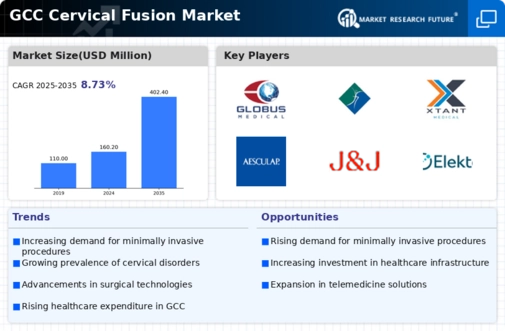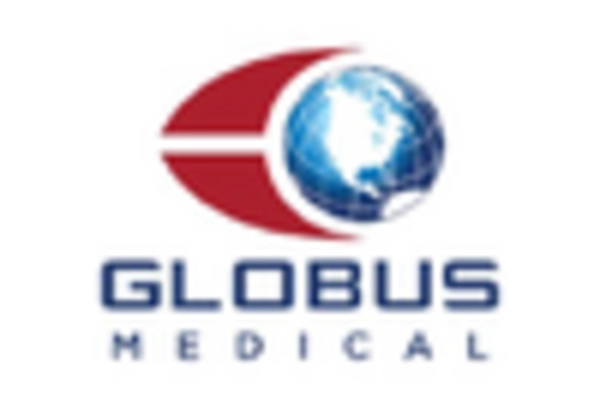Rising Healthcare Expenditure
Increasing healthcare expenditure in the GCC is a significant driver of the cervical fusion market. Governments in the region are allocating more resources to healthcare, with spending projected to reach $100 billion by 2026. This financial commitment is facilitating the development of advanced medical facilities and technologies, which in turn enhances the availability of cervical fusion procedures. As healthcare systems improve, more patients gain access to necessary surgical interventions, leading to a potential increase in the number of cervical fusion surgeries performed. The cervical fusion market will benefit from this upward trend in healthcare investment.
Aging Population and Associated Health Issues
The demographic shift towards an aging population in the GCC significantly impacts the cervical fusion market. As individuals age, the prevalence of cervical disorders, such as degenerative disc disease, tends to increase. Reports indicate that the population aged 65 and above in the GCC is expected to rise by 20% by 2030. This demographic change is likely to lead to a higher demand for cervical fusion surgeries, as older adults often require surgical interventions to alleviate chronic pain and restore mobility. Consequently, the cervical fusion market is poised for growth, driven by the healthcare needs of an aging society.
Advancements in Surgical Techniques and Materials
Innovations in surgical techniques and materials are playing a crucial role in shaping the cervical fusion market. The introduction of bioactive materials and improved fixation devices has enhanced the efficacy of cervical fusion procedures. In the GCC, the market is witnessing a surge in the use of advanced biomaterials, which are expected to account for approximately 30% of the total market share by 2026. These advancements not only improve surgical outcomes but also reduce the risk of complications, thereby attracting more patients to opt for cervical fusion surgeries. The continuous evolution of surgical practices is likely to sustain the growth trajectory of the cervical fusion market.
Growing Awareness and Education on Cervical Health
There is a growing awareness regarding cervical health issues among the population in the GCC, which is positively influencing the cervical fusion market. Educational campaigns and initiatives by healthcare providers are informing individuals about the symptoms and treatment options for cervical disorders. This heightened awareness is likely to lead to earlier diagnosis and treatment, resulting in an increased demand for cervical fusion surgeries. As more patients seek medical advice for cervical issues, the market is expected to expand, driven by the proactive approach towards cervical health management.
Increasing Demand for Minimally Invasive Procedures
The cervical fusion market is experiencing a notable shift towards minimally invasive surgical techniques. This trend is driven by patient preferences for procedures that promise reduced recovery times and lower complication rates. In the GCC region, the adoption of minimally invasive methods is projected to grow, with an estimated increase of 15% in procedures over the next five years. Hospitals and surgical centers are investing in advanced technologies that facilitate these techniques, thereby enhancing patient outcomes. As a result, the cervical fusion market is likely to benefit from this growing demand, as more patients opt for surgeries that minimize trauma and expedite rehabilitation.

















Leave a Comment